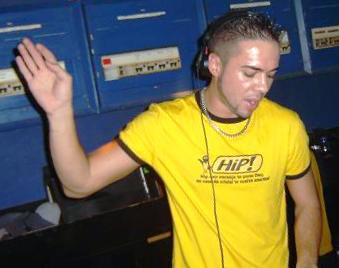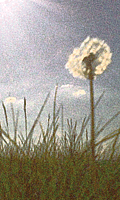


NEWS:
Almost no time left to hear November's shows streaming and vote in the 2025 Festive 50!
Artist Info
|
The Sound  Image from Discogs  The Sound was formed in South London in 1979, shortly after a band called The Outsiders dissolved. It isn't a very well-distributed fact, but the Outsiders' 1977 LP Calling on Youth was the first self-released British punk LP, issued roughly four months after Buzzcocks' infamous Spiral Scratch 7". Guitarist/vocalist/songwriter Adrian Borland led the Outsiders through a couple of other releases, but the band sputtered out three years after their 1976 formation. Bassist Graham Bailey (aka Graham Green), who had joined the band in time for their final recordings, followed Borland into the new group with a drummer named Michael Dudley and a saxophonist/clarinetist/keyboardist named Bi Marshall. The Sound was formed in South London in 1979, shortly after a band called The Outsiders dissolved. It isn't a very well-distributed fact, but the Outsiders' 1977 LP Calling on Youth was the first self-released British punk LP, issued roughly four months after Buzzcocks' infamous Spiral Scratch 7". Guitarist/vocalist/songwriter Adrian Borland led the Outsiders through a couple of other releases, but the band sputtered out three years after their 1976 formation. Bassist Graham Bailey (aka Graham Green), who had joined the band in time for their final recordings, followed Borland into the new group with a drummer named Michael Dudley and a saxophonist/clarinetist/keyboardist named Bi Marshall.Fittingly enough, Borland's motivation to cut ties to the punk movement mirrored that of original Buzzcocks member Howard Devoto, who left his own band after Spiral Scratch. Like Devoto, who had gone on to pioneer yet another field called post-punk with Magazine, Borland looked around, saw all the bands who played straight-ahead chug-chug-chug rock & roll, and decided that the tired blueprint was in need of a little more depth and variation; atmospheres, tensions, and unfamiliar twists on the interplay between the instruments would be needed. Lyrics were another thing. Not content with simply railing against the government or grunting and yelping about trivial matters to merely keep a song moving, Borland became one of the few post-punk songwriters whose lyric sheets were truly worth ingesting and analyzing. Former Outsider Adrian Janes aided the cause, remaining involved with Borland in a behind-the-scenes manner, writing some of the band's lyrics with his former band mate. The Sound made their first recordings in the living room of the Borland family home, with Adrian's supportive father Bob acting as recording engineer. As demonstrated on Propaganda, a posthumous release from 1999 that collects these sessions, the band was gradually -- not so drastically and suddenly -- leaving the Stooges/Velvets axis and applying touches that would be developed into something all their own. They received their first break of sorts from Stephen Budd, an early supporter since the Outsiders days, who had recorded and released some material by Bailey and Borland's electronically inclined side project, Second Layer. Budd's label, Tortch Records, made a small profit from a Second Layer release, so he opted to put it right back into the Sound's first release. Budd also became the band's manager, booking studio time for them with Nick Robbins in Elephant Studios and finding places for the band to gig. The first release made a humble impression. Physical World was reviewed positively in the NME by Paul Morley, and DJ John Peel took minor interest, playing it a couple times during his influential BBC program. Though the Sound hadn't the will to pine for a major label deal, the WEA-affiliated Korova label (home of Echo & the Bunnymen) came knocking when they found out the band was going back into the studio to make a full album. Korova heard the rough mixes of the album and a deal was made. Regardless of the label's involvement, Jeopardy was recorded cheaply, and upon its release was reviewed extremely favourably by all the important outlets. Reviews in the NME, Sounds, and Melody Maker gave it five stars. Rightfully likened to the Bunnymen, the Teardrop Explodes, and Joy Division in those reviews, one only needs to hear the weakest song from the record to realize that the Sound -- from the very beginning -- belonged in that high class. Bi Marshall left the band and was replaced by Max Mayers (aka Colvin Mayers) before the Sound went in to work with master producer Hugh Jones, who had previously worked with the Teardrops and the Bunnymen, for the follow-up. From the Lion's Mouth took full advantage of the band's atmospheric, mind-bending capabilities by coating their songs -- accessible and economical as ever -- with richly layered productions that didn't hide the rock-solid foundation the songs were built on. Another round of positive reviews and another round of general indifference from the public ensued, though a cult following was festering. Korova became a little anxious with the band and wanted some hits. Surely, the next one would break them. It wouldn't happen. Working again with Nick Robbins, the band was pressured by the label to compromise and play the pop game. Not only that, but the band was shifted to WEA proper, a move that probably had more to do with taxes than music. The heat from the label and the climate it spawned resulted in All Fall Down, one of those historically troubled third albums (i.e., the one that super-diehard fans defend to their grave). The Sound responded to the situation with their least penetrable record by a couple brick walls. And WEA responded to the response with no promotion. Criticized for being too wilfully distant, for cannibalizing the back catalog, and for lacking immediacy (i.e., "tunes"), the record still has much to give the listener. Although it's not the band's best moment by a long shot, it's hardly something the band would feel ashamed of later on. To little surprise, the band wound up without a label and decided to reconsider their direction. The period of dormancy involved a collective realization that the enthusiasm for making music and playing it, despite being a little drained from their experiences with WEA, had never really waned. Several major labels expressed interest in signing them, but in the end Statik won out; the band decided it would be better to go with the small independent. (Surprisingly enough, the band worked out a short-term deal with A&M to release material in the States, but it was pretty pointless.) Shock of Daylight, a six-song EP, was released in 1984. The time off served them well, resulting in some of the band's most fiery and uplifting material. This carried through to the following year's glassy/classy Heads and Hearts, the band's fourth studio album. Two dates at the Marquee during August were recorded for the double live album In the Hothouse, which was released in 1986. For their final album, 1987's Thunder Up (released on Play It Again Sam in Belgium and Nettwerk in Canada), the band allowed the darkness from All Fall Down and the shivering, plaintive desolation of Shock of Daylight's "Winter" to creep back in. Few were still paying attention, but the Sound released a swan song that most of the members considered to be their finest work, with plenty of variety that hangs together. Nearly a decade of empty wallets and minor personality clashes had eroded the band's resilience, so the band decided to stop shortly after its release. Borland continued in music throughout the next two decades, producing other acts and releasing another batch of under-appreciated records as a solo artist and as a member of a couple side projects (the Honolulu Mountain Daffodils, White Rose Transmission). Bailey, Dudley, and Mayers left music for the most part. Mayers passed away in the early '90s, a victim of AIDS. And on April 26, 1999, Borland took his own life. Thanks to the Renascent label's reissuing program in the late '90s and early 2000s, the Sound's discography has been restored and revitalized. "From the Lion's Mouth" is still regarded as a mark in new wave. Read more on Last.fm. User-contributed text is available under the Creative Commons By-SA License; additional terms may apply. Artist biography from last.fm Some other places to look for information: last.fm Discogs MusicBrainz |
